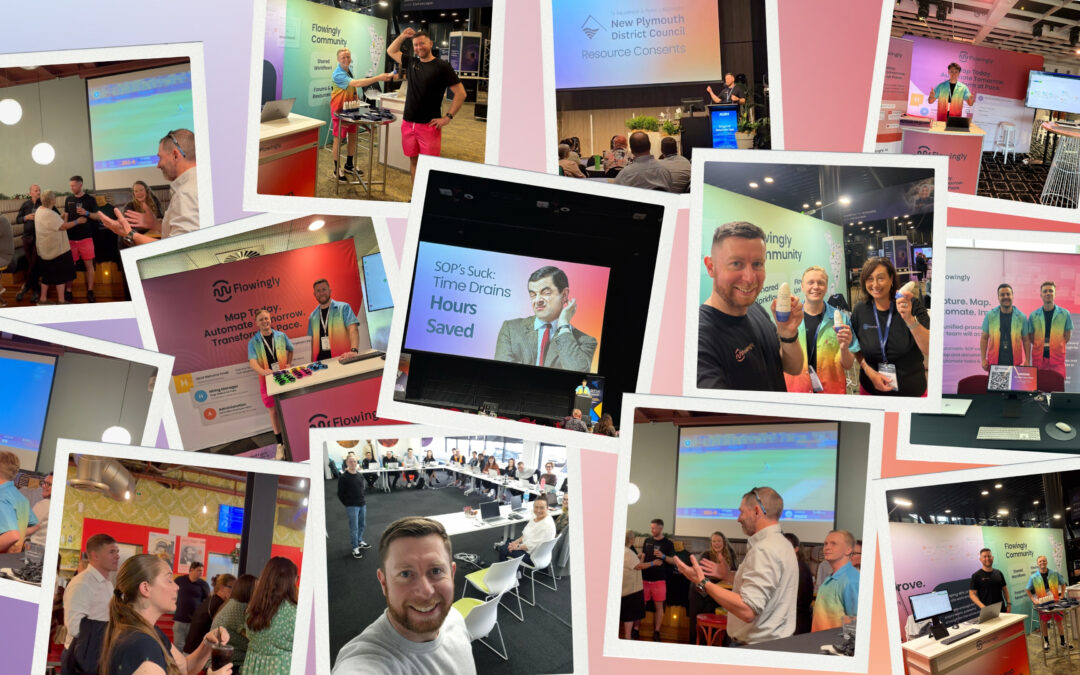
Flowingly 2025 Year in Review: A Big Year for Better Processes
Flowingly 2025 Year in Review: A Big Year for Better Processes
If 2024 was the year everyone started rethinking their processes, 2025 has been the year teams finally took control of them.
Across councils, government agencies, utilities, education providers, and organisations of every size, one theme has come through loud and clear:
“We want less admin, less ambiguity, and more clarity.”
And this year, Flowingly delivered exactly that.
Here’s a look back at the product updates, achievements, and community moments that made 2025 such a defining year – and a look ahead at what’s coming next.
The product releases that shaped 2025
AI SOP Recorder – The update that changed everything
The Flowingly AI SOP Recorder finally solved a problem everyone’s been avoiding: writing Standard Operating Procedures.
Now teams can simply do the work, and Flowingly automatically builds the SOP – clear, accurate, instantly editable.
No typing. No snipping tool. No formatting in Word.
With AI SOPs we turned documentation from a chore into something people can do as they work.
Process Tagging
Tagging made it simple to organise and find any process, instantly.
Filter by department, team, function or use case – no more digging through folders or guessing where things live.
Governance
Governance makes it easy to see who owns what, what needs updating, and where risks might sit.
It keeps teams aligned and compliant without all the manual check-ins.
Public Workflows
With Public Workflows, anyone outside your organisation can start processes such as HR forms, supplier onboarding, community submissions, incident reports and service requests.
It’s a clean, simple way to collect information without logins, inbox clutter or follow-ups.
Flow & Tell: Real teams, real processes
One of our favourite launches this year was Flow & Tell, our customer-led webinar series where real teams walk through the processes they’ve mapped, improved and automated with Flowingly.
No jargon. No buzzwords. Just honest stories about what’s working, what’s changing and how people are making everyday work simpler.
It’s become a go-to resource across the Flowingly community – a place to learn directly from the people doing the work.
Our community continues to grow
In 2025, a wave of new organisations chose to make their work a little simpler with Flowingly – and councils were right at the heart of that momentum.
These teams brought fresh ideas, honest challenges, creative solutions and a shared commitment to working smarter, not harder. Their energy has shaped the way we’ve built and improved Flowingly this year, and we couldn’t be more grateful for the conversations, feedback and wins they’ve shared along the way.
Together, this growing community is setting a new standard for clarity, consistency and confidence in everyday work – across local government, public-sector agencies, education, utilities and beyond.
More events than ever
A big thank you
To all of our customers.
Thank you for:
Every workflow you published.
Every SOP you recorded.
Every improvement you celebrated.
Every webinar you joined.
Every webinar you spoke on.
Every piece of feedback you shared.
You helped make 2025 Flowingly’s strongest year yet.
Here’s to more clarity, more confidence and more progress in 2026.



